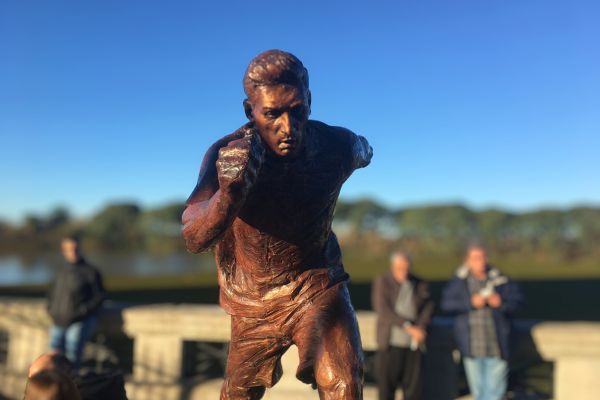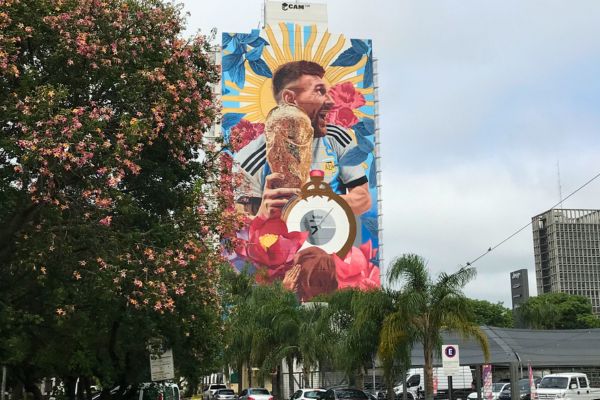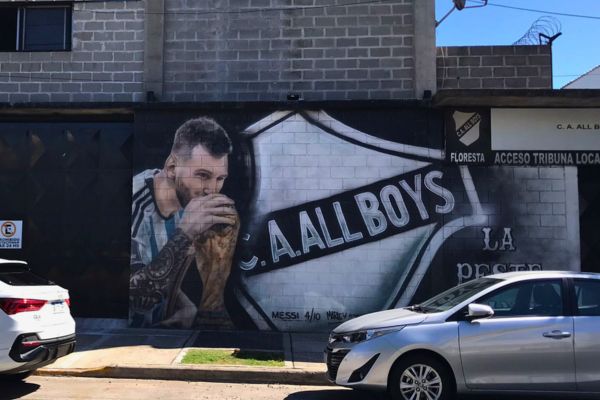It’s a crisp, early winter morning in June 2016 in Buenos Aires. Along the Costanera Sur—a scenic promenade by the Río de la Plata—the city’s mayor, Horacio Rodríguez Larreta, stands before a crowd and a swarm of cameras. Beside him: a brand-new statue of Lionel Messi, the pride of Argentina.
Smiling, Larreta speaks directly to Messi:
“As a football fan, Lio, I ask you—please don’t leave the national team. As a symbol of our admiration and support, we’re unveiling your statue here on the Paseo de la Gloria.”
The timing was emotional. Just days earlier, Messi had shocked the world by announcing his retirement from international football after Argentina’s loss in the Copa América final. The unveiling of the statue was as much a plea as a tribute. Larreta, like millions of Argentines, didn’t want their greatest player to walk away.
The crowd erupts in applause. A man in a full Argentina kit begins juggling a football nearby. It’s a moment of national pride and uncertainty. Messi—affectionately called La Pulga ("The Flea") for his size and speed—has just been immortalized alongside Argentina’s greatest sporting icons, from Gabriela Sabatini to Manu Ginóbili.
I happened to pass by the statue not long after its unveiling and managed to snap a photo—featured here in this post. It’s now a rare glimpse of a monument that, like Messi’s international retirement, turned out to be short-lived.
But as the ceremony ended, no one expected the bizarre fate that would soon befall the statue.
Argentina’s Paseo de la Gloria: Celebrating Sporting Legends

The Paseo de la Gloria in Buenos Aires’ Puerto Madero district is a prestigious walkway lined with statues of Argentina’s sporting heroes. It’s a public celebration of those who’ve made Argentina proud across different disciplines.
Among these icons stood Lionel Messi—a symbol of football greatness, and a reminder of Argentina’s global football legacy. His statue represented not just his achievements, but the hopes of a nation.
From Tribute to Target: The Statue’s Fate

Sadly, the statue soon became a repeated target of vandalism.
In multiple incidents, including one in 2018, the statue was damaged—once even sliced at the ankles, leaving only its base. Though the city had repaired it before, the continued attacks led to its eventual removal, raising questions about whether it would be reinstalled or replaced at all.
Whether the attacks were acts of mischief, protest, or something else, the message was clear: even in bronze, legends aren’t always safe.
Messi’s Comeback and Ultimate Triumph

Despite the turmoil, Messi returned to the national team just weeks after his retirement—moved by the outpouring of support from fans, teammates, and public figures like Larreta.
What followed was a historic comeback.
-
Copa América 2021 – Messi finally lifted a major international trophy with Argentina, defeating Brazil at the Maracanã.
-
FIFA World Cup 2022 – Cementing his legacy, Messi led Argentina to World Cup glory in Qatar, earning the Golden Ball and fulfilling a lifelong dream.
-
Copa América 2024 – Messi and Argentina struck again, defending their continental crown and proving their dominance in South American football.
The statue may have vanished—but the legend only grew.
A New Kind of Tribute

While the original statue was removed, new tributes emerged. In 2023, a 3D-printed statue of Messi was unveiled in El Caminito, the colorful neighborhood of La Boca.
In his hometown of Rosario , and in the province of Santa Fe, as well as across Buenos Aires, murals now celebrate Messi’s achievements, including a massive one of him on the side of a tall building.
These public artworks feel more permanent than bronze—etched in paint, heart, and pride.
How Do You Celebrate a Living Legend?
Messi’s statue may no longer stand in the Paseo de la Gloria, but his legacy remains untouchable. The story of the statue—its creation, destruction, and quiet disappearance—mirrors the complex relationship between public tributes and modern icons.
As Argentina continues to honor its footballing greats, the challenge remains: how do you celebrate living legends while protecting their legacy in the public eye?
Interested in Other Football Statue Stories?
Check out The Most Confusing Statue in Football History — why is there a Michael Jackson statue outside Fulham’s stadium?
And read about Nachito’s Statue — a touching tribute to fandom at Estadio Azteca in Mexico.
Visiting Buenos Aires?
Don’t miss:
El Monumental: Home of River Plate
La Bombonera: Boca Juniors’ legendary stadium
Check our pages on these stadiums in our Legendary Stadiums section.
